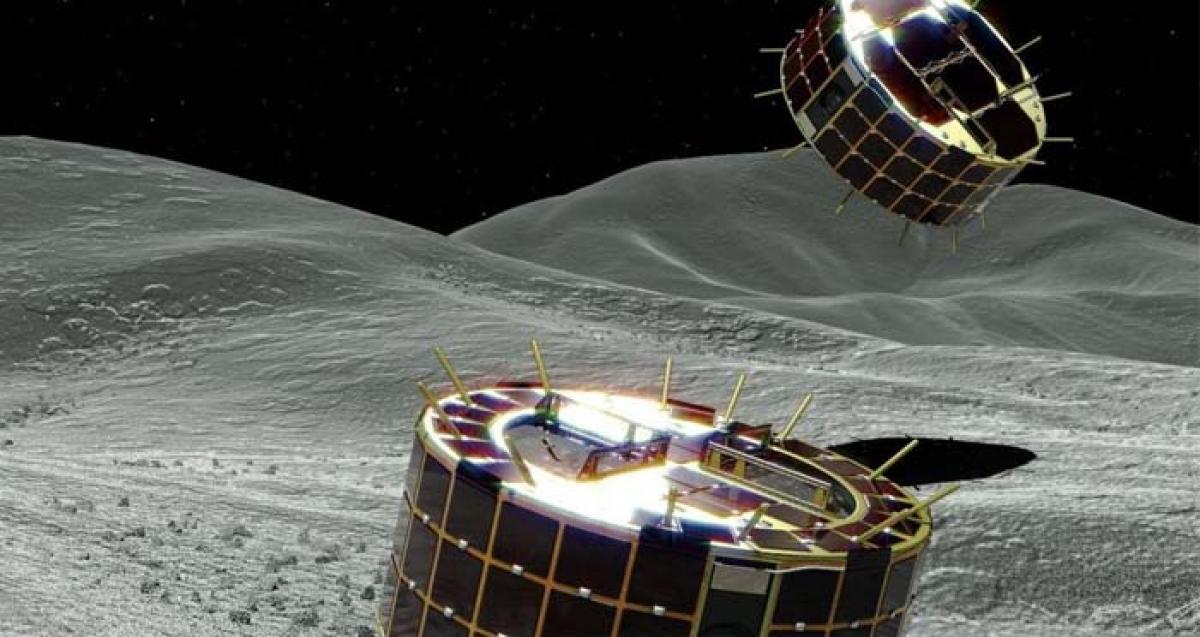Live
- Must-Watch OTT Originals in 2024: The Year’s Best Shows and Movies
- 40 Indian startups secure over $787 mn in a week
- India now formidable force on chess board
- Raghavendra Mutt pontiff visits Tirumala
- Whistleblower of OpenAI found dead in US apartment
- Trump’s US-first policy & India’s strategic latitude
- Chandrababu pays tribute to Potti Sriramulu and Sardar Vallabhbhai Patel
- India may miss TB elimination target
- Revolutionizing Women’s Health: The Era of AI
- Govt bill explains plan for ONOE
Just In
Japanese space agency launches hopping probes to land on asteroid


A hopping space probe which will land on the surface of a large asteroid has been launched by the Japanese Space Agency
A hopping space probe which will land on the surface of a large asteroid has been launched by the Japanese Space Agency.
The agency's spacecraft released two small exploration robots in a research project to find clues to the origin of the solar system.
Both Minerva-II rovers were lowered from the unmanned Hayabusa2, on to the asteroid Ryugu.
The rovers move around by hopping, because the gravity on the asteroid makes rolling difficult. Each hop lasts 15 minutes.
The spacecraft travelled to the asteroid, which is 170 miles (280m km) from Earth, and arrived in June.
The space agency (JAXA) said it would know if the robots have landed on Saturday, when they will send confirmation data of touchdown.
If the mission is successful it will be the first moving, robotic observation of an asteroid surface.
The two robots will capture images of the asteroid and measure temperatures before the agency sends a larger rover in October.
Yuichi Tsuda, JAXA project manager said: "We are very much hopeful. We don't have confirmation yet, but we are very, very hopeful.
"I am looking forward to seeing pictures. I want to see images of space as seen from the surface of the asteroid."
Shortly after the launch, the agency's Twitter account for the lander wrote: "Breathtaking... just breathtaking, don't you think? Go MINERVA II1 rovers! You're on your way to #Ryugu … and I'm next!"
JAXA also revealed it had lost communication with the robots, writing: "Communication with MINERVA-II1 has currently stopped. This is probably due to the rotation to Ryugu, and MINERVA-II1 is now on the far side of the asteroid.
"We are currently working to confirm if there are images capturing the MINERVA-II1 landing."
Next month Hayabusa2 will deploy an impactor which will explode above the asteroid, to blast a crater into its surface.
The probe will then collect fresh materials from inside the crater which have not been exposed to wind and radiation.
Hayabusa2 launched in December 2014 and is due back to Earth in 2020.
JAXA tried to launch a probe in 2005, but it failed to land on its target asteroid.

© 2024 Hyderabad Media House Limited/The Hans India. All rights reserved. Powered by hocalwire.com






